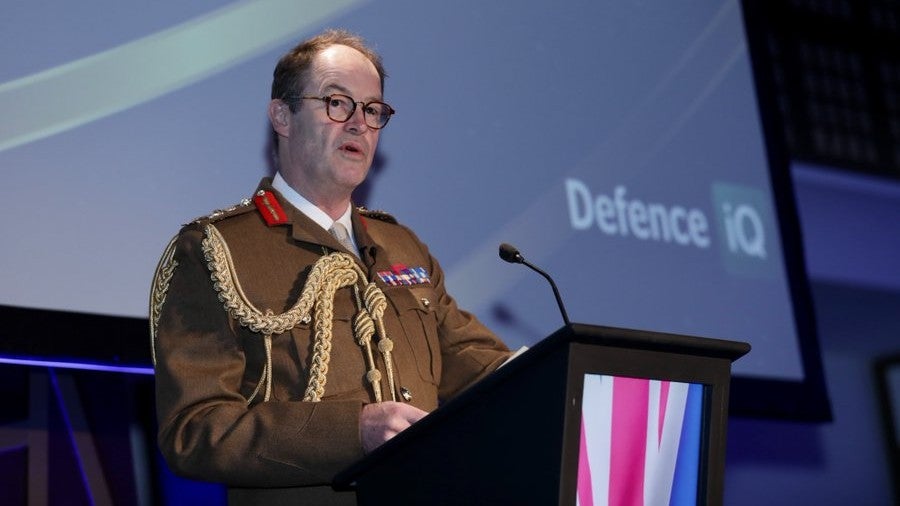
Should war break out with Russia, the UK public will be enlisted to fight because the country’s military numbers are too small, head of the British Army General Sir Patrick Sanders will reportedly warn at the International Armoured Vehicles expo in Twickenham today (24 January).
While Sanders is not in favour of conscription, The Telegraph reported, he will call on the government to develop a contingency plan to “mobilise the nation”.
Sanders’ remarks come against the backdrop of a UK military retention crisis, with a 4% drop in Army, Air Force and Navy service members from 2022 to 2023.
His comments were supported by MP Tobias Elwood, a former defence minister, who has repeatedly pushed for an increased defence budget and troop recruitment.
“As authoritarian states exploit our timidity … Patrick Sanders is saying prepare for what’s coming over the horizon,” Elwood told Sky News. “There’s a 1939 feel to the world right now.”
Meanwhile, Nato Admiral Rob Bauer said that nations should be prepared to “find more people if it comes to war”, and to consider “mobilisation, reservists or conscription”.
Sanders, who became head of the British Army in June 2022, is set to leave the role later this year – an unusually short term. He will be replaced by current deputy chief of the defence staff Lieutenant General Sir Roland Walker.
Undervalued and dissatisfied – the UK military exodus
While Sanders’ and Elwood’s calls for a rise in UK defence spending and soldier enlistment seem a superficially logical response to Russian aggression, lingering issues over soldier retention and arms procurement remain.
A recent Ministry of Defence (MoD) survey found that just 34% of service personnel said they felt valued while 46% felt dissatisfied with the standard of their accommodation.
In the past year, 16,260 service members have left the UK Armed Forces, which have struggled to retain female personnel amid a sexual harassment crisis.
“Sanders recognised that despite the British military’s strong technical capabilities, its lack of critical mass in terms of personnel would pose a significant challenge in a high-intensity conflict,” GlobalData defence analyst Tristan Sauer told Army Technology.
Despite retention woes, the UK boasts an array of innovative capabilities in arms technology.
Last week, the MoD successfully demonstrated its new ‘DragonFire’ laser weapon system (LWS) at the Hebrides Range, just off the northwest coast of Scotland.
The MoD said DragonFire can precisely target a £1 coin from a kilometre away and costs roughly only £10 per ‘shot’.
But numerous procurement projects – chiefly the Ajax armoured vehicle programme – have faced prolonged difficulties.
Safety issues and production delays aside, Ajax has risen in taxpayer cost from $4.3m to $5.5m, according to estimations by the MoD and House of Commons.
UK defence budget set to keep rising
Many other projects have downsized over time, reducing the intended fleet sizes if not the allocated budget.
Such a recipe means the UK’s defence budget is set to rise to $66bn in 2024, according to GlobalData, even as overall force sizes remain at historic lows.
Other Nato members, meanwhile, are bolstering defence spending and troop sizes.
In the Russia-bordering Baltic states, conscription has been made mandatory for male citizens once again.
Last Friday (19 January), the defence ministers of Lithuania, Latvia and Estonia announced the construction of anti-mobility defensive installations on the borders with Russia and Belarus.
The Swedish government intends to increase its defence budget by 28% following Türkiye's long-awaited approval of Stockholm’s Nato membership bid yesterday (23 January).
While Sauer reiterated that military conscription is a last resort in the event of fully-fledged war, he called on the MoD and UK government to prepare a strategy for such a scenario.
“It is incumbent on current and future UK governments to formulate a strategy capable of mobilising the public much like what has occurred in Ukraine over the past two years.”








